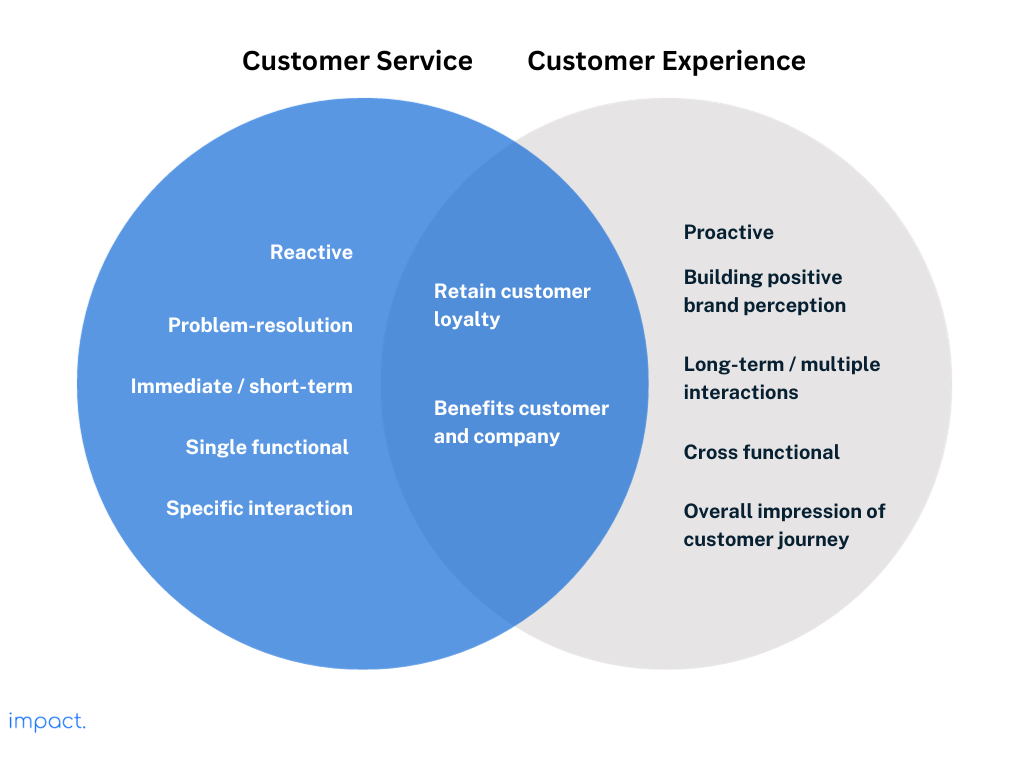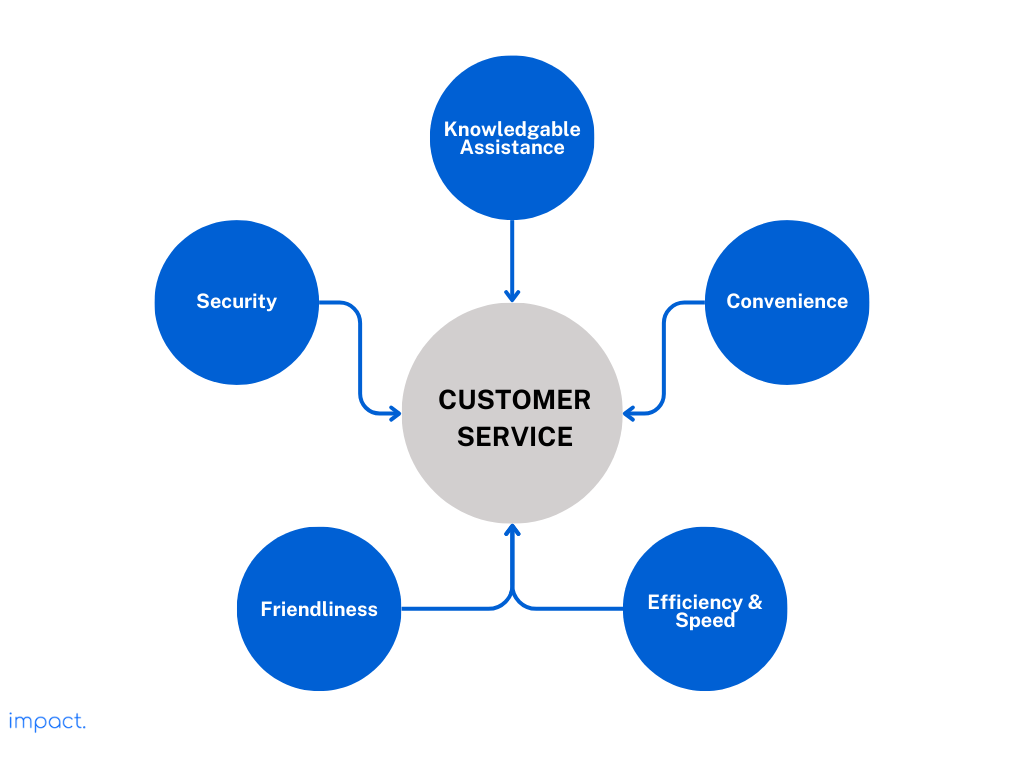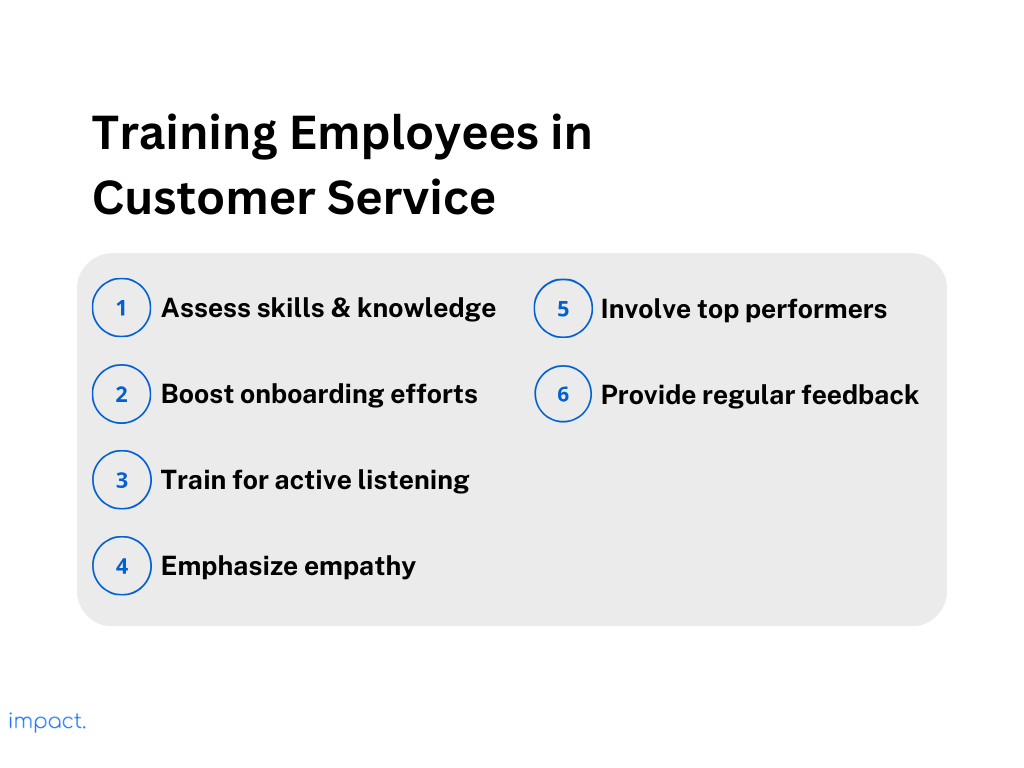Blue Ocean Strategy: 7 Steps to Ignite Business Transformation
“Blue Ocean Strategy,” by W. Chan Kim and Renée Mauborgne, is a pioneering blue ocean…
Insight Team
January 1, 2025In the last chapter of our retail business guide, we discussed pricing strategies, exploring how to set the correct prices. In this chapter, we’re diving into something equally important: customer service.
Customer service might not always get the attention it deserves, but improving how you treat your customers can make a big difference. According to McKinsey research, it could boost your sales by 2-7% and your profits by 1-2%. Customer service isn’t just about transactions; it’s about fostering lasting connections. It’s about building loyalty and getting good reviews that attract new customers.
In the upcoming sections, we’ve got six simple strategies to boost your customer service game. These steps will help you create an outstanding customer experience with personal care and an easy return process. Plus, we’ll show you how to train your staff to be more helpful and attentive to customers.
Read more: Retail Inventory & Pricing: a Management Guide
Customer service is how companies help their customers. It’s about giving support before, during, and after someone buys something. This help can involve guiding customers to make intelligent choices, solving problems, and ensuring people are happy with what they’ve bought.
Good customer service means being quick to help, being friendly, and making customers happy. A customer’s satisfaction is what pushes them to return. Businesses can give customer service in many ways, like in person, on the phone, through email, or on social media, depending on what customers like and what kind of business it is.
You may come across the term customer experience (CX). While businesses often use customer experience and customer service interchangeably, they have distinct meanings.

Customer service is when a company talks directly with its customers. On the flip side, customer experience is the whole journey a customer goes through when dealing with a company, from when they first hear about it to when they buy something and even afterward.
CX includes everything a customer does with the company, not just getting help with questions or problems. It also covers things like how good the products are, how the company advertises, how easy the website is to use, and what visiting the store is like.
You’ve learned about customer service and its distinction from customer experience. Now, let’s explore the essential parts that make solid customer service.

Customers want to feel like they’re talking to someone who knows what they’re talking about. They don’t want to stumble into uncertainty if they have a question or a problem. They want to trust that the person helping them is knowledgeable.
For example, a customer enters a computer store looking for a new laptop. They ask the salesperson about the different models and which is best for your needs. They would feel a lot more confident in their store if the salesperson could explain each laptop’s features, benefits, and drawbacks.
This knowledge fosters trust in the store and increases the likelihood of customers making a purchase. That’s why being well-informed and knowledgeable is essential in providing excellent customer service.
Good customer service means being there for customers in ways that suit them best. Whether online, on the phone, via text, or through social media, people want to get help in a way that feels right.
To make this happen, offer different ways to contact your business – like calling, emailing, chatting, or meeting face-to-face. And make sure that when they do reach out, it’s easy and hassle-free. This way, you’ll create a better experience for your customers.
When you solve customer problems quickly, you show respect for their time and make them happy with your service. Fast responses let your customers know you’re listening and caring for their needs.
Efficiently solving issues shows that you’re getting the job done. Whether you’re simply answering a common question or fully fixing a customer’s problem, how fast you act affects how responsive you appear.
Imagine a customer bought a product from your store, but it’s not working as expected. When they reach out to your customer service, how you handle this situation matters. If you respond quickly and provide clear instructions on how to return or replace the product, the customer will feel valued and heard.
This quick response assures them that you’re there to help. Once they follow your guidance and receive a working replacement, your efficient resolution shows them you’re committed to solving their problem. It contributes to a positive customer experience, leading to loyalty and positive word-of-mouth.
When your customer service team approaches interactions with friendliness and empathy, it goes a long way in creating a positive connection with your customers. This approach is vital because it makes customers want to return to you for more and tell their friends about your business.
Imagine calling a company; the person on the other end is genuinely friendly and cares about your issue or question. It not only solves your problem but also makes you feel valued. This positive experience sticks with you, and you’re more likely to choose that company again when you need their products or services.
In today’s digital age, data is a highly valued currency. Security matters significantly in customer service because it shows customers that their info is safe. When you keep their data and transactions secure, it builds trust and makes you more credible.
Your customers want to feel that their personal and financial details are protected when dealing with you. It’s not just about rules; it’s about making your customers feel safe and confident about what you offer.
Read more: Choosing the Right Retail Location in 5 Steps
Improving your business’s customer service involves using several vital strategies. When combined, these strategies create a smooth and customer-focused experience beyond customer expectations. Let’s explore the following six strategies in more detail.
The first step to providing excellent customer service is getting to know your customers well. This strategy means finding out what they like and don’t like about your business. You can do this by:
Understanding your customers helps you determine what your business wants and needs. This way, you can make sure your services are a good fit for them.
Your customer service team represents your business. To ensure they can help customers well, training them is crucial. This training should cover product knowledge, communication skills, problem-solving, and empathy. People like dealing with knowledgeable staff, so ensure your team knows your products and services. It will help them handle customer issues promptly and efficiently.
According to McKinsey, 71% of customers want personalized interactions from companies. When they don’t get it, 76% of them get frustrated. Personalization is a big deal in making customers happy.
Every customer is different, so personalized service treats them as unique individuals with their quirks and likes. Call them by their names, remember what they liked before, and adapt to what they want. This personal touch helps you build stronger relationships with your customers. The more you know about them, the better you can keep them interested and engaged with your company.
Creating a customer-centric culture puts customer happiness at the forefront of everything your company does. It means that everyone in your organization, from the top leaders to the newest employees, should be working towards providing fantastic customer service. Here’s how it works:
Read more: Customer Development Process: 4-Step Framework for Startups
Today, customers like using different ways to connect with businesses, like calling, emailing, online chatting, or visiting in person. Statistics show that live chat is the most satisfying at 79%, email at 61%, and phone at 44%.
Multichannel customer service is the key. It means being there to help no matter where customers ask for it. When you offer help through all these different ways, it’s easier for them and shows you care. Various support channels boost customer satisfaction and keep them coming back to you when they need something else.
Imagine if you only let people call you and didn’t allow emails or online chats. If you don’t provide options, you might miss out on new customers and upset the ones you already have.
Creating clear service standards is crucial to ensure consistent and high-quality customer service. These standards specify how quickly you’ll respond to customers, what steps you’ll take to resolve their issues, and what key indicators you’ll track to improve your customer service.
To offer top-notch customer service, you need to train your staff correctly. This way, they can meet and even beat customer expectations. Let’s get into the key steps to improve your team’s customer care.

To begin, take a good look at your staff’s abilities and what they already know. This evaluation is crucial because it helps you determine where they need to improve. Once you understand their strengths and weaknesses, you can create training that addresses these areas. This way, your training efforts will be more effective and on target.
After evaluating your team, if you need to replace inexperienced employees, focus on improving your onboarding process. Ensure new hires get the skills and knowledge they need immediately. They should have access to thorough training, resources, and mentors before starting their responsibilities.
Good customer service often comes down to knowing who to contact or talk to within the company. Top-notch customer service agents have a firm grasp of the company’s workings. A great way to begin passing on this company knowledge is during onboarding. Use this time to encourage your customer support team to gain a deep understanding of your company.
Once you’ve checked your staff’s skills, begin training them in active listening. Active listening means listening and responding in a way that helps both parties understand each other better.
Tell your staff to let the customer finish talking before they reply. Also, suggest repeating what the customer said about their issue. This soft skill makes customers feel heard and understood. When training your team, emphasize these active listening methods for a better customer experience.
Customer service is all about understanding and caring for your customers. Sometimes, your staff might be unable to give customers exactly what they want. However, that doesn’t mean they should say “no” without trying to find a compromise.
Help your employees learn to be patient and show empathy. Teach them phrases like, “Let me check with my manager to see if we can find a solution.” Taking a few minutes to talk to a customer and building a connection can make it easier for them if we can’t fulfill their request.
To make empathy work, it has to be authentic. So, you need to lead by example in dealing with your employees. Show them the same patience and empathy you want them to show customers. Also, choosing the right people for customer service roles is essential. Not everyone is suited for customer interactions.
Find your top customer service representatives and get them in on the training. They can be mentors, share their tips, and give helpful advice to new team members.
By involving them, you’re not only rewarding and motivating them, but you’re also setting a high bar for the rest of the team. Everyone will find inspiration to elevate their performance and reach the level of top performers. Additionally, you’re tapping into the wisdom of those who’ve been there and done that.
Finally, set up a feedback system to keep track of your team’s performance. Regular feedback sessions are essential because they help employees see what they’re good at and where they can get better. Constructive feedback guides your staff in improving their customer service skills as time goes on. This way, everyone can keep getting better at what they do.
Many major companies are famous for providing excellent customer service. They set a high standard for the industry and are known for their exceptional service. Here’s how they do it:
Apple provides excellent customer service through its personalized support. The Apple Support app offers a knowledge base, live chat, and the option to schedule a call with an Apple expert. Customers can also visit the Genius Bar in Apple stores for in-person help. They make sure to address your concerns quickly and in a way that makes you feel valued and supported.
Amazon’s success isn’t just by chance; they’re good at making returns and refunds easy for their customers. They always think about what the customer needs. When customers buy something, they can get it delivered quickly. When they have any questions or problems, Amazon gives an immediate reply. They offer helpful chat and phone support. Amazon makes sure that returning things is easy. Dealing with Amazon is easy, thanks to their commitment to customer satisfaction. They’re great at making their customers happy.
The Ritz-Carlton stands out for its exceptional customer service. Their employees are empowered to go above and beyond to ensure guests have a memorable stay. Ritz-Carlton staff undergo extensive training to pay attention to minor details, ensuring that guests’ preferences and requirements are effortlessly met.
Improving your customer service is essential for the success of your business. Customer service extends beyond mere transactions; it involves cultivating robust relationships, fostering loyalty, and garnering positive reviews to entice fresh customers.
By using the six strategies we’ve talked about, you can create a great customer experience. It means caring, training your staff, and setting clear service standards. Remember, good customer service keeps customers happy and coming back for more.
In our upcoming chapter, we’ll delve into the world of branding, investigating how a strong brand identity can draw in more customers and set you apart from your competition.
Impact Insight Team
Impact Insights Team is a group of professionals comprising individuals with expertise and experience in various aspects of business. Together, we are committed to providing in-depth insights and valuable understanding on a variety of business-related topics & industry trends to help companies achieve their goals.
75% of digital transformation projects fail. Take the right first step by choosing a reliable long-term partner.
